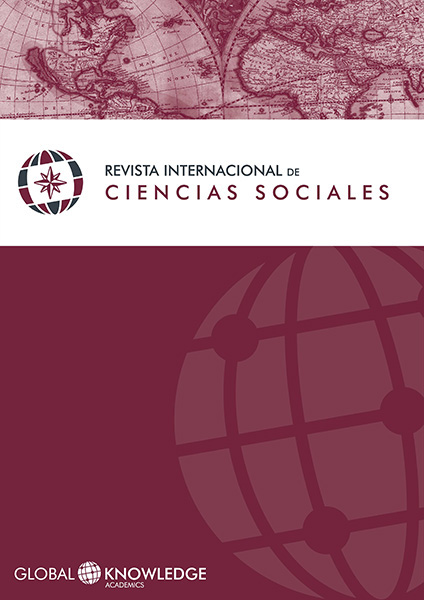Resilience and Future Social Education Professionals
DOI:
https://doi.org/10.37467/gka-revsocial.v1.1205Keywords:
Resilience, Social Education, UniversityAbstract
Resilience is the capacity that the persons have in order to confront the adversities and become strengthened from the same ones. The professional in social-education is a fundamental figure in the process that will create conditions that will promote the resilience in the persons and groups they interact with. Because of this and of their own work's nature, the social educator not only must have an adequate resilience level but also they must have the tools and techniques that will allow them to educate in this topic. This statement shows a study on the resilience profile of future social educators within the Social Education students of the University of the Basque Country. In order to measure the level of resilience in this sample, an adaptation of the scale made by Walnid y Young (1993) has been used. The results obtained seem to indicate that the resilience level of the future educators is moderated and that there are no statistically significant differences in resilience regarding sex or age. On the other hand in the theoretical study, diverse and significant aspects on resilience are approached: conceptualization, history and current importance in the scientific investigation; and the educational strategies that are necessary for its promotion.
Downloads
Global Statistics ℹ️
|
538
Views
|
256
Downloads
|
|
794
Total
|
|
References
Arranz, P (2009). La Resiliencia en Educación como elemento favorecedor del proceso de autodeterminación en las personas con discapacidad. Universidad de Zaragoza. Recuperado el 29/12/11 en: http://www.pasoapaso.com.ve/CMS/images/stories/variospdfs/resiliencia_arranz.pdf
Barranco, C. (2009). Trabajo social, calidad de vida y estrategias resilientes. Portularia IX (2), 33-145. Tenerife: Universidad La Laguna.
Carretero, R (2010). Resiliencia. Una visión positiva para la prevención e intervención desde los servicios sociales. Nómadas. Revista Crítica de Ciencias Sociales y Jurídicas, 27 (3) 47- 70.
Dyer, J. y McGuinness, T. (1996). Resilience: Analysis of the concept. Archive of Psychiatric Nursing, 10, 276-282. DOI: https://doi.org/10.1016/S0883-9417(96)80036-7
Franco Justo, C. (2010). Intervención sobre los niveles de burnout y resiliencia en docentes de educación secundaria a través de un programa de conciencia plena (mindfulness). Revista Complutense de Educación, 21 (2), 271-288.
Fraser, M., Rischman, J. y Galinsky, M. (1999). Risk, protection and resilience: Toward a conceptual framework for social work practice. Social Research , 23 (3), 131-143. DOI: https://doi.org/10.1093/swr/23.3.131
Forés, A. (2008). Pedagogía de la resiliencia. Revista Misión Joven 377. Barcelona: Universidad Ramón Lull.
Garmezy, N. (1991). Resiliency and vulnerability to adverse developmental outcomes associated with poverty. American Behavioral Scientist, 34, 416-430. DOI: https://doi.org/10.1177/0002764291034004003
Garmezy, N., Masten, A., y Tellegen, A. (1984). The study of stress and competence in children: A building block for developmental psychopathology. Child Development, 55, 97-111. DOI: https://doi.org/10.2307/1129837
Grotberg, E. (1995). A guide to promothing resilience in children. La Haya: Fundación Bernard Van Leer.
Grotberg, E. (1996). Guía de promoción de la resiliencia en los niños para fortalecer el espíritu humano. Países Bajos: Fundación Bernard Van Leer.
Grotberg, E. (2003). Resiliencia, descubriendo las propias fortalezas. Recuperado el 3/5/11 en: http://www.cidei.cl/Documentos/38.pdf.
Henderson, H. y Milstein, M. (2003). Resiliencia en la Escuela. Barcelona: Paidos Ibérica
Hiew, C., Mori, J., Shmigu, M., y Tominaga, M. (2000). Measurement of resilience development: preliminary results with astate-trait resilience inventory. Journal of Learning and Curriculum Development, 1, 111-117.
Infante, (2002). Análisis de cuatro programas de América Latina que trabajan con un marco conceptual de la resiliencia. En Fundación Bernard Van Leer (Ed.) Resiliencia en programas de desarrollo infantil temprano: Estudio de revisión en cuatro programas de América Latina. 25-45 La Haya: Fundación Bernard Van Leer.
Kirby, L. y Fraser, M. (1997). Risk and resilience in childhood. En M. Fraser (Ed.), Risk and resilience in childhood, (pp. 10-33).Washington, DC: Nasw Press.
López Jiménez, P. (2007). Construir la resiliencia en la práctica educativa: estrategias y actuaciones pensadas por y para educadores/as”. Recuperado el 25/10/11 en: www.peretarres.org/wps/.../articulo_resiliencia_mision_joven.pdf
Luthar, S., Cicchetti, D. y Becker, B. (2000). The Construct of Resilience: Critical Evaluation and Guidelines for Future Work. Child Development, 71, 543-562. DOI: https://doi.org/10.1111/1467-8624.00164
Masten, A. (1994). Resilience in individual development: Successful adaptation despite risk and adversity. En M.C. Wang y E.W. Gordon (Eds.).Educational resilience in inner-city America: Challenges and prospects 3-25. New Jersey: Hillsdale.
Masten, A., y Coatsworth, J. (1998). The development of competence in favorable and unfavorable environments.American Psychologist, 53, 205-220. DOI: https://doi.org/10.1037/0003-066X.53.2.205
Melillo A. y Suarez N. (2002). Resiliencia. Descubriendo las propias fortalezas. Buenos Aires, Paidós.
Muñoz, V. y De Pedro (2005). Educar para la resiliencia. Un cambio de mirada en la prevención de situaciones de riesgo social. Revista Complutense de Educación 16(1), 107-124.
Prado R. y Del Águila Chávez M. (2003). Diferencia en la resiliencia según género y nivel socioeconómico en adolescentes. Revista Persona , 6, 179-196. DOI: https://doi.org/10.26439/persona2003.n006.885
Rutter, M. (1987). Psychosocial resilience and protective mechanisms. American Journal of Orthopsychiatry, 57, 316-331. DOI: https://doi.org/10.1111/j.1939-0025.1987.tb03541.x
Rutter, M. (2000). Resilience reconsidered: Conceptual considerations, empirical findings and policy implications. En J. Meisels (Ed., Handbook of Early Intervention (2), 48-72. New York: Cambridge University Press DOI: https://doi.org/10.1017/CBO9780511529320.030
Saavedra, E. y Villalta M. (2008). Medición de las características resilientes, un estudio comparativo en personas entre 15 y 65 años. Recuperado el 29/01/12 en: http://www.scielo.org.pe/pdf/liber/v14n14/a05v14n14.pdf
Samblás Pérez E. (2010). Niños y adolescentes que sufren malos tratos. Recuperado el 27/1/12 en: http://www.escuelatranspersonal.com/tesis/educacion/ninos-y-adolescentes-que-sufrenmalos-tratos.pdf
Sánchez, S. (2003). Resiliencia. Como generar un escudo contra la adversidad. Recuperado el 12/10/2005 en http://www.resiliencia.cl/investig/.
Vanistendael, S. y Lecompte, J. (2002). La felicidad es posible. Barcelona: Gedisa.
Villalba, C. (2004). El concepto de resiliencia. Aplicaciones en la intervención social. Psychosocial Intervention – Intervención Psichosocial , 12 (3), 283-299.
Wagnild, G.M. y Young, H.M. (1993). Development and psychometric evaluation of the Resilience Scale. Journal of Nursing Measurement 1, 165-178.
Werner, E. (1982). Vulnerable but in vincible: a longitudinal study of resilient children and youth. New York: McGraw-Hill.
Werner, E. E. y Smith, R. S. (1992). Overcoming the Odds: High-Risk Children from birth to adulthood. Nueva York: Cornell University Press. DOI: https://doi.org/10.7591/9781501711992
Downloads
Published
How to Cite
Issue
Section
License
Those authors who publish in this journal accept the following terms:
-
Authors retain copyright.
-
Authors transfer to the journal the right of first publication. The journal also owns the publishing rights.
-
All published contents are governed by an Attribution-NoDerivatives 4.0 International License.
Access the informative version and legal text of the license. By virtue of this, third parties are allowed to use what is published as long as they mention the authorship of the work and the first publication in this journal. If you transform the material, you may not distribute the modified work. -
Authors may make other independent and additional contractual arrangements for non-exclusive distribution of the version of the article published in this journal (e.g., inclusion in an institutional repository or publication in a book) as long as they clearly indicate that the work was first published in this journal.
- Authors are allowed and recommended to publish their work on the Internet (for example on institutional and personal websites), following the publication of, and referencing the journal, as this could lead to constructive exchanges and a more extensive and quick circulation of published works (see The Effect of Open Access).













